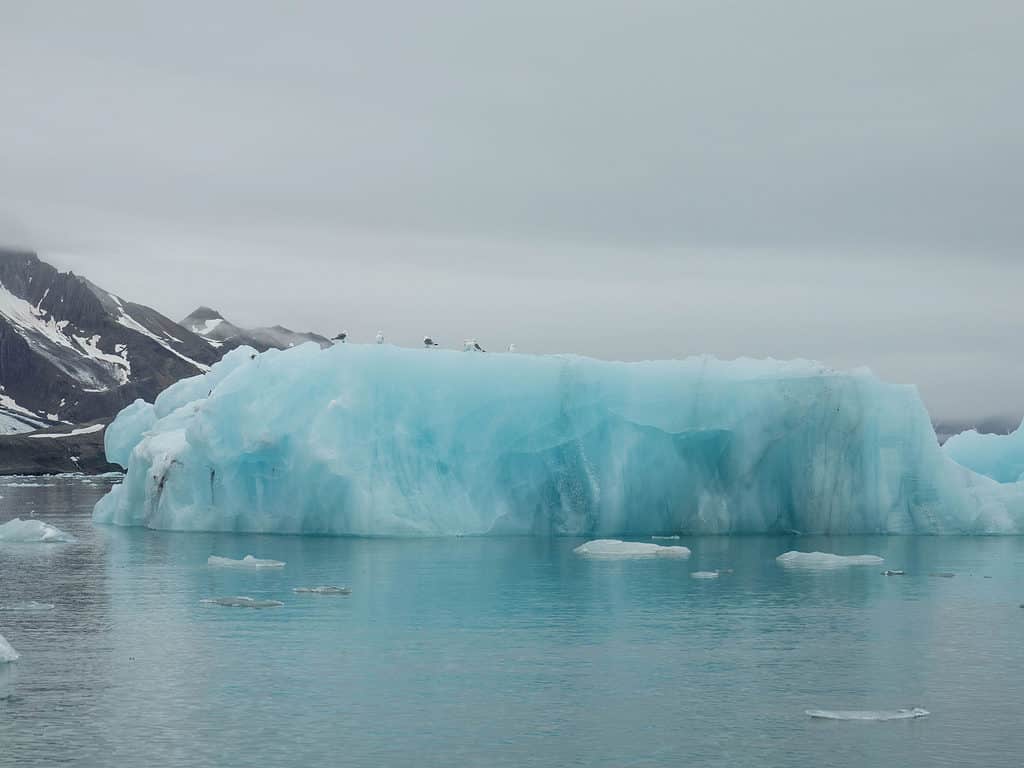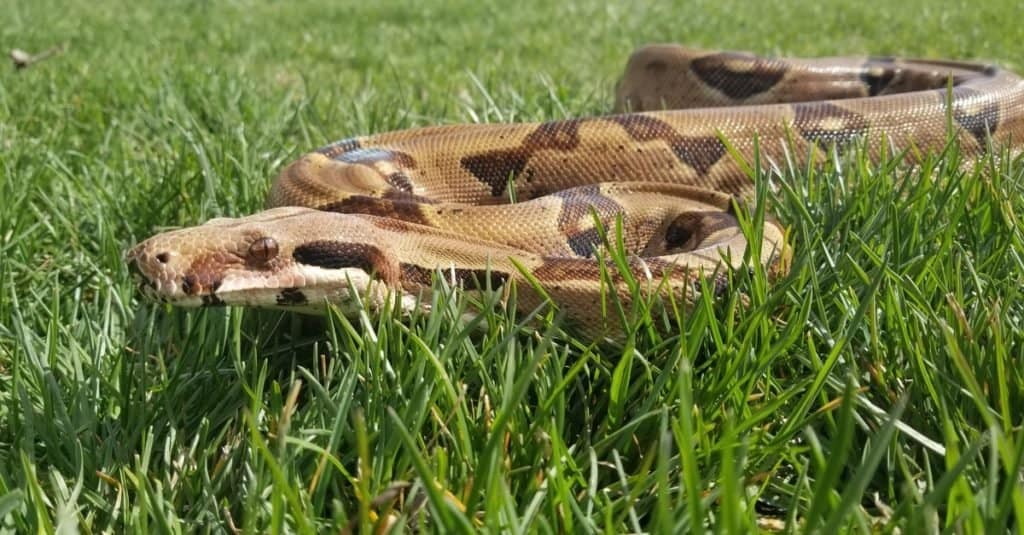Have you ever seen a boa constrictor up close? If you haven’t, you might have your chance to encounter one soon. Climate change predictions from several studies have concluded that the advancement of giant exotic snakes into the United States is possible. In fact, three giant exotic snake species have already been discovered in southern Florida. Find out which snakes might come to your home state and what threats they pose to ecosystems.
What is Climate Change?
To understand what climate change is, the term “climate” must be defined. The main issue with climate is that many make the mistake of assuming that climate means weather. The distinction between weather and climate is that weather varies day to day while climate generalizes weather patterns and varies from season to season.
For instance, New England has a reputation for a wet and cold winter climate. However, it receives different amounts of precipitation and experiences different temperatures according to the weather throughout the duration of the winter season.
Climate change occurs when the usual weather and climate of an area begin to shift or alter to become something else. In current times, scientists have noticed a shift in Earth’s climate; it has become 1ºF warmer over the last century. While this increase does not seem like much, even the smallest change in global temperatures can have detrimental effects.
For instance, ice caps and glaciers, which hold freshwater and are home to many Arctic creatures, have begun to melt due to this increase. Usually, ice does an exemplary job of reflecting the sun, prohibiting the earth from absorbing heat from the sun’s rays. When ice melts, there is less surface area to reflect the sun’s rays, meaning that heat from the sun becomes absorbed into the earth. This heat absorption causes temperatures to rise, which, in turn, melt the ice further.
The process is an example of a positive feedback loop. In this case, a positive feedback loop is anything but positive. The term “positive” refers to an increase. In this instance, the rate at which the ice melts increases. But why is this a bad thing? Melting causes sea levels to rise, leading to flooding, habitat loss, and other adverse effects.
Climate change occurs mainly due to the release of greenhouse gases into the atmosphere. Greenhouse gas release derives from anthropogenic activities, such as driving cars, using electricity and heat, manufacturing, and agriculture. The release of gases like methane and carbon dioxide causes heat to become trapped within Earth’s atmosphere. The heat causes global warming, where temperatures begin to increase. Global warming leads to climate change, as places that originally experienced a colder climate begin to grow warmer. Overall, climate change can lead to natural disasters, loss of biodiversity, habitat destruction, and fluctuating temperatures.

Ice caps and glaciers, which hold freshwater and are home to many Arctic creatures, have begun to melt as a result of climate change.
©iStock.com/Eisenlohr
Climate Change Effects on Giant Snakes
As of 2009, the United States Geological Survey (USGS) reports three giant exotic snake species to have been found in Florida. These include the Burmese python, the North African python, and the boa constrictor. The native range of these snakes includes Southeast Asia, Sub-Saharan Africa, and Latin America, respectively. USGS points to two main reasons why these snakes were found in Florida. First, the commercial snake trade is present in southern Florida, which is likely how these snakes appear in the United States. Second, Florida’s climate is suitable as a home for these tropical snakes, allowing them to thrive and reproduce.
However, these snake appearances are not limited to three individuals, as evidence of reproduction within the three species was discovered by USGS. Not only are the snakes present in Florida, but their populations are increasing. Furthermore, certain snake species like the boa constrictor are well established in Florida, meaning these species likely have a higher population count and pose a larger threat to wildlife than other snakes.
Although these species were discovered in Florida, the question is whether they will be able to move further North into other areas within the United States. According to USGS, increasing global temperatures mean that the movement of certain snake species northward is a possibility.
For instance, the boa constrictor and the Argentine boa have garnered attention due to their appearance in Florida and possible advancement northward. While the boa constrictor’s native habitat range lies within Mexico and Central America, climate change predictions depict much of Florida and Texas as having suitable climates for the boa constrictor and the Argentine boa’s survival and reproduction.
However, boa constrictor population numbers are much greater than Argentine boa population numbers in Florida. This distinction greatly affects the possibility of boa constrictor advancement northward. Due to low population numbers representing the Argentine boa in current-day Florida, the species can be taken out of the equation. While Argentine boas can withstand a great temperature range, boa constrictors are more limited in their adaptability to certain climates. Therefore, the boa constrictor is limited to survival and reproduction in central and southern Florida and the southernmost tip of Texas. Thus, boa constrictor invasion further north than central Florida is unlikely.

Climate change predictions depict much of Florida and Texas as having suitable climates for the boa constrictor.
©KatKade/Shutterstock.com
Another snake, the Burmese python, has also been predicted to move northward. While current global temperatures support the existence of the Burmese python in the southern United States (Texas, Louisiana, Mississippi, Alabama, etc.), temperature projections for the year 2100 tell a different story. By 2100, the area of suitable climate, which would support the survival and reproduction of the Burmese python, extends into the northern United States. The outlined area includes places like Washington, Colorado, New York, Pennsylvania, and much of the Midwest. Therefore, the Burmese python, given its continued population growth and increasing global temperatures, would be able to inhabit areas that were once deemed too cold for the snake’s survival.
However, the findings of USGS concerning the invasion of the Burmese python into the northern United States are both challenged and partially defended by another study. This study includes ecological factors and climate change predictions, but it does not come to the same conclusion as USGS. The study finds that the advancement of the Burmese python into the North and Midwest is unlikely despite the threat of global warming. Researchers in this study contend that the Burmese python is limited to southern Florida and the southernmost part of Texas.

The Burmese python is one of three exotic snake species found in Florida.
©dwi putra stock/Shutterstock.com
However, the study does assert that Washington state would be a suitable climate for the Burmese python’s survival and reproduction based on global warming and climate change. While Washington might seem like a future home for the Burmese python, the likelihood of the snake’s gradual migration so far north is close to impossible.
Unless the Burmese python was introduced through the exotic snake trade into Washington, it would have to gradually travel throughout many of the lower 48 before reaching this state. As the climates represented by other states between Florida and Washington are not suitable for the Burmese python, the snake would not arrive to its destination.
What Does This Mean for the United States?
The reason why the introduction of giant exotic snakes into the United States might be negative is because these snakes threaten ecosystem stability. There are no indigenous American snakes that measure up to the described exotic species in both size and predation. Therefore, other animals that are native to America have never experienced an ecosystem in which there is a massive snake predator.
Native animals are also unequipped to defend themselves against the way in which these giant snakes kill their prey. They have not evolved alongside a giant snake predator and, thus, would be unable to protect themselves against a foreign method of predation such as constriction. In this way, giant snakes could cause a decrease in certain animal populations that they deem as prey. Population fluctuations or mass extinctions due to the introduction of a massive snake predator would alter the food chain and, therefore, alter the stability of the ecosystem as a unit.
Luckily, the likelihood that climate change causes these giant snake species to move into the northern United States is low. While climate change is a serious issue and should be addressed for many reasons, snake invasion is not a prime example of the adverse effects of climate change. Snake invasion would be extremely harmful to numerous ecosystems, but it doesn’t pose a threat right now. Overall, snakes are not going to invade your home and take over your state, so there’s no need to worry about them.
However, they could pose a threat in the far away future if global temperatures continue to rise. Growing popularity of the exotic snake trade combined with global warming could bring them close. Therefore, caring for the Earth and doing what you can to prevent climate change could make all the difference in the advancement of terrifying giant snake species.
Up Next
- 3 Invasive Snakes in Florida
- Boa versus Python: How to Tell Them Apart
- 7 Snakes that are Invasive in the United States (Including a “Hybrid”)
The photo featured at the top of this post is © Jan Hejda/Shutterstock.com
Discover the "Monster" Snake 5X Bigger than an Anaconda
Every day A-Z Animals sends out some of the most incredible facts in the world from our free newsletter. Want to discover the 10 most beautiful snakes in the world, a "snake island" where you're never more than 3 feet from danger, or a "monster" snake 5X larger than an anaconda? Then sign up right now and you'll start receiving our daily newsletter absolutely free.
Sources
- CIRES Education and Outreach, Available here: https://cires.colorado.edu/outreach/sites/default/files/2020-07/Teacher%20Guide%20-%20Ice-Albedo%20Feedback.pdf
- NASA, Available here: https://www.nasa.gov/audience/forstudents/k-4/stories/nasa-knows/what-is-climate-change-k4.html
- USGS, Available here: https://pubs.usgs.gov/of/2009/1202/pdf/OF09-1202.pdf
- PLOS ONE Pyron RA, Burbrink FT, Guiher TJ , Available here: https://journals.plos.org/plosone/article?id=10.1371/journal.pone.0002931
- Cub Creek Science Camp, Available here: https://cubcreeksciencecamp.com/programs-activities/meet-our-animals/reptiles-amphibians/colombian-red-tail-boa/
FAQs (Frequently Asked Questions)
Will giant exotic snakes advance north due to climate change?
It is unlikely that climate change would cause giant exotic snakes to move further north than Texas and Florida.
What are some examples of giant snakes found in the United States?
Giant snakes found in Florida include the Burmese python, the North African python, and the boa constrictor.
Why is the introduction of giant snakes into the United States negative?
Introduction of giant snakes into the United States could alter the stability of ecosystems and cause extinctions.
Thank you for reading! Have some feedback for us? Contact the AZ Animals editorial team.






